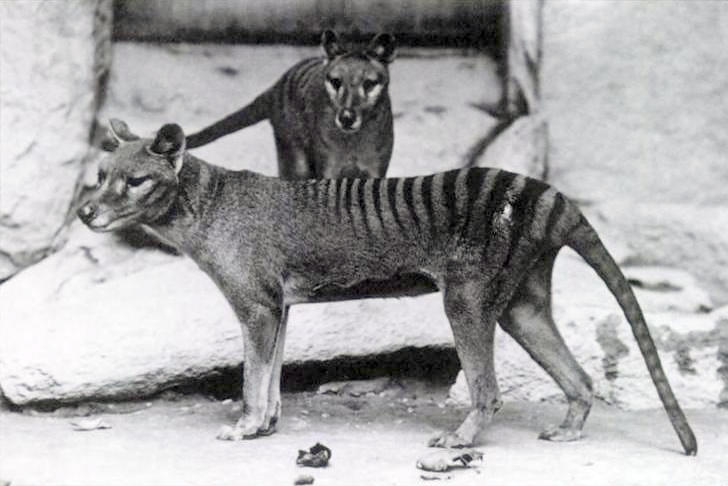
Genome for endangered Tasmanian tiger was completed
On Jun. 28, 2011, to prevent extinction of the Tasmanian tiger, a team of scientists led by the University of Melbourne announced they had sequenced the genome of the Tasmanian tiger (Thylacinus cynocephalus), making it one of the most complete genetic blueprints for an extinct animal.
The Tasmanian devil (Sarcophilus harrisii), the largest marsupial carnivore, is endangered due to a transmissible facial cancer spread by direct transfer of living cancer cells through biting. Tasmanian devil facial tumor disease (DFTD) is an unusual cancer that has survived beyond the death of the individual that spawned it by acquiring adaptations for transmission between hosts. This cancer has spread through the Tasmanian devil population and is threatening the species with extinction
The team sequenced and analyzed the entire genome of one healthy individual and one that died of a contagious cancer known as devil facial tumor disease. The devil cancer genome contains more than 17,000 somatic base substitution mutations and bears the imprint of a distinct mutational process. Genotyping of somatic mutations in 104 geographically and temporally distributed
Tasmanian devil tumors reveals the pattern of evolution and spread of this parasitic clonal lineage, with evidence of a selective sweep in one geographical area and persistence of parallel lineages in other populations.
The research helped to formulate a plan to prevent the extinction of the animal — a marsupial found in the wild exclusively in the Australian island-state of Tasmania. The research model also may be extended to other endangered species.
Tags:
Source: National Institutes of Health
Credit:
